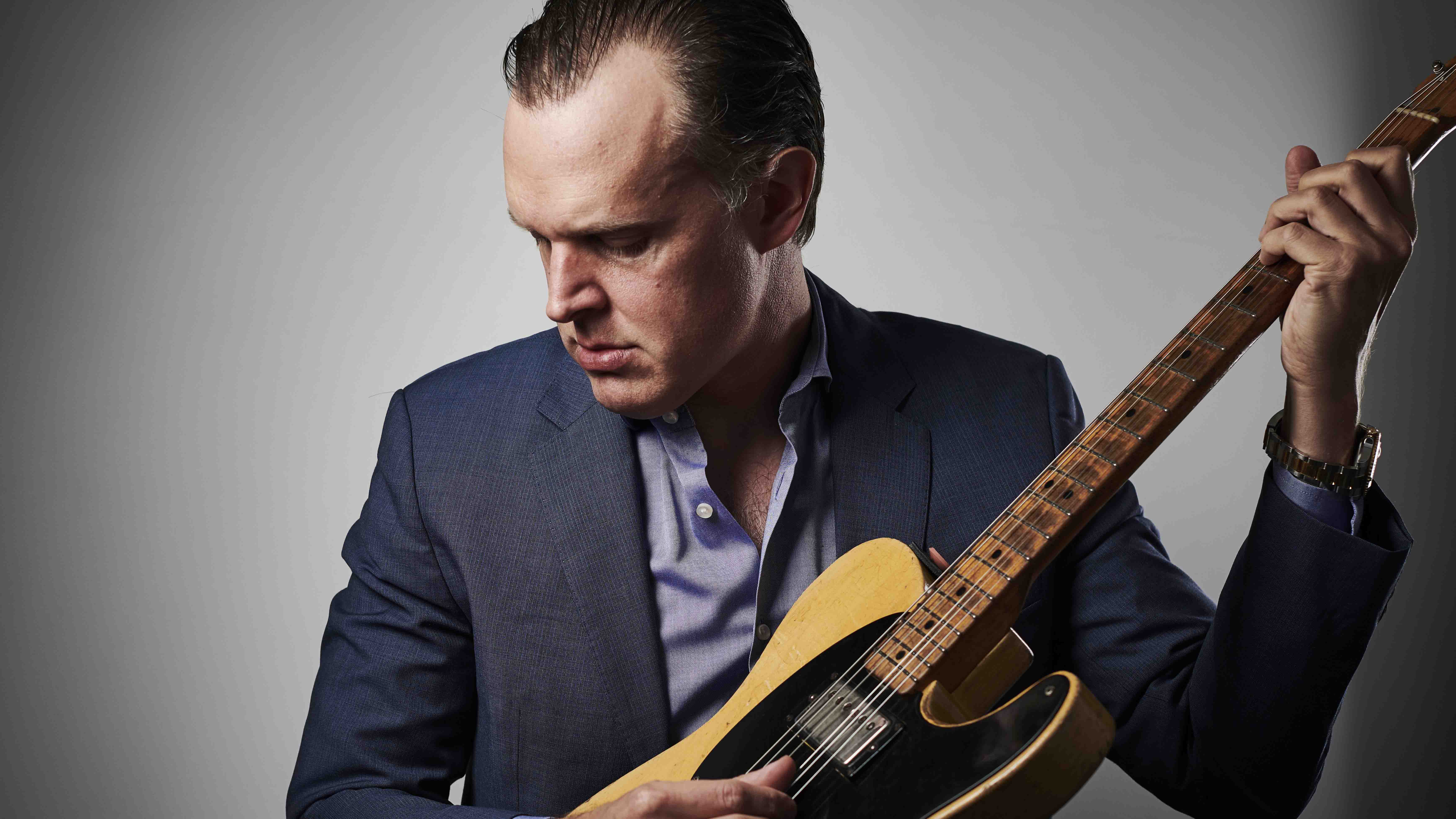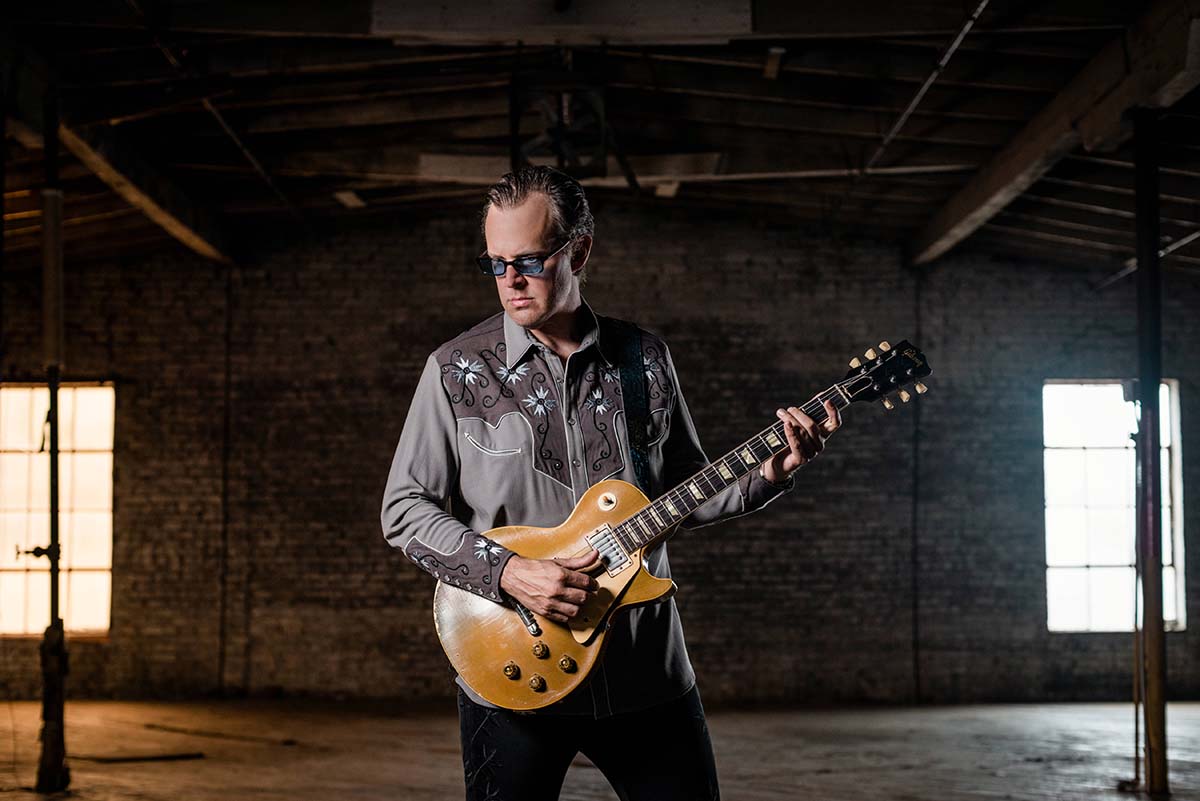Mike Hickey's resume as a player includes Hall & Oates, Venom and Carcass but for the last nine years he's been kept pretty busy as Joe Bonamassa's guitar tech. So he's got a lot of insight on everything from '59 Bursts to Fender Tweeds and what makes an expert tonehound like JoBo tick.
"When I started there were 22 guitars on the tour," says Mike in a new interview with Thomann's Kris Barocsi. "Then as we progressed over the years and he got more and more vintage gear, we honed it down to specific instruments for specific sounds."
Bonamassa has a "rotating 'Burst situation" with his Les Pauls, and two or three will be out with him, with a '58 Flying V occasionally joining the gang, alongside ES Gibsons, a 1955 hardtail Fender Strat.
"That thing is essential, it's been refretted a few times and it's just the best Strat – and I've played hundreds and hundreds… I think that guitar stands above a lot of the others," says Mike.
Quite often during the show Joe will adjust
So how does Joe like his guitars set up? "Higher than most people," reveals Mike. But it's not something Mike quantifies by millimetres with a string action gauge. But after measuring the top E at the 12th fret on one of Joe's Bursts on camera, Mike reveals it's .08 of an inch with the high E string is actually set high at .09, and when you consider .05 is considered low for the thick E string, it's definitely on the higher side.
Joe's bridge PAF humbucker is at .110 of an inch from the bottom of the low E string and "about the same" for the treble side. Though, preference is hugely variable on the pickup itself.
"Quite often during the show Joe will adjust," adds Mike on the subject of pickup heights. "So he might want it down or up and you can do about quarter of a turn."
Get the MusicRadar Newsletter
Want all the hottest music and gear news, reviews, deals, features and more, direct to your inbox? Sign up here.
Stringing is another area where things get very specific for Joe's Les Pauls when it comes to cutting the guitar string ballends off. "I thread it on, just like a needle," explains Mike. This is essential for the specific top wrap technique over the bridge that Joe prefers.

"This is something I came up with in the '90s and it started because I got an old Les Paul and the bridge was caving in," says Mike. "And I top wrapped because Billy Gibbons did it and I thought it looked really cool. Then I started breaking strings on the back side here [where the string bends over the bridge] and what I realise is when you put the string through, the winding part where it's double wound at the end, you would think that's the strongest area but actually when you bend it it's a weak area as opposed to the string itself. So I came up with this idea; I'll put this ball end on and so then I feed everything though – I always put all six strings through."
Joe uses gauge 11 Ernie Ball electric guitar strings now on his Gibsons which Mike admits are "a hard ride for most people". But something he also prefers. "I've gotten used to it over the years and now I prefer it," notes Mike. "My left hand doesn't prefer it because I like a lot of legato, hammer-on activity. Now the right hand loves it because I can pound the hell out of it, especially with my death metal background. I like a little resistance and I came from playing tuned to B or C# with 12-56 and I got used to that tension on the right hand."

You can argue all you want but you'll never be a cool as Billy Gibbons with the top wrap
But there's another advantage to the top wrapping string technique on Gibsons that Mike employs. "If you've got your [bridge] posts all the way down, and you see some guys they raise the post to make less tension, in my mind's eye I still want to see that thing on the deck. So the other cool thing [top wrapping] does is if you just have [the strings] normally full through, the strings tend to touch the back of the bridge [when its set low]. Then the string is just touching the saddle, it's not ouching any other part at that point. So you've got this open area for the string to just do what it needs to do and sustain.
"And there will be guys who will argue all day with you that that is not the way to do it, and that's good too," Mike concedes. "But you can argue all you want but you'll never be a cool as Billy Gibbons with the top wrap."
It's worth watching the video above to see exactly how the strings are fitted with Mike's method. But what's the advantage of setting a Les Paul bridge flush against the body to begin with? Enhanced sustain and resonance via strengthening the bond between bridge and body.
Mike also gets into details about the differences in neck angle pitch and tenon between '58, '59 and '60 Les Pauls. Most lust after '59s as the ultimate examples, with early '60s examples very similar. Mike explains that the neck angle changed later in 1960s production.
"The neck pitch is slightly more on a late '60s [LEs Paul], says Mike. "And also your tenon is short so with the high bridge for the neck angle you get more of a trebly bite and snap."
Mike knows what he's talking about because he's played more Les Paul Bursts than most in the last 20 years. "I've been really fortunate, I've probably played 350, 400 Bursts," he reveals. "I've documented them all, and I want to make a book."
We can't wait to read it!
Joe Bonamassa's top 5 tips for guitarists

Rob is the Reviews Editor for GuitarWorld.com and MusicRadar guitars, so spends most of his waking hours (and beyond) thinking about and trying the latest gear while making sure our reviews team is giving you thorough and honest tests of it. He's worked for guitar mags and sites as a writer and editor for nearly 20 years but still winces at the thought of restringing anything with a Floyd Rose.
“I feel like that song had everything we needed to come back with”: Bring Me The Horizon’s Lee Malia on Shadow Moses, its riff and the secrets behind its tone, and why it was the right anthem at the right time
“For those on the hunt for a great quality 12-string electro-acoustic that won’t break the bank, it's a no-brainer”: Martin X Series Remastered D-X2E Brazilian 12-String review









